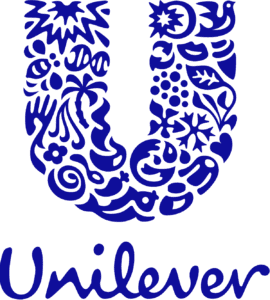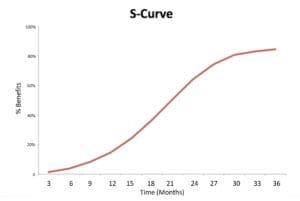[ad_1]

Unilever is consistently rated a company with one of the best supply chains in the world. They are also one of the world’s best in terms of succeeding at integrating digital technology into all areas of business. Much of this success is related to their relentless commitment to S-Curve programs. Unilever is rather unique in applying S-curves to their ongoing digital transformation.
Unilever (NYSE: UL) is one of the world’s largest consumer goods companies. The company had revenues of over €60 billion in their last fiscal year. The company has over 400 brands, including 14 that had a turnover of more than €1 billion. These include such well-known brands as Dove, Vaseline, Hellman’s and Ben & Jerry’s.
Such a large company, they have over 127,000 employees globally, clearly has a massive supply chain. This multinational operates 280 factories and 500 warehouses, that source raw materials from 52,000 suppliers in over 150 countries, processes 25 million customer orders annually, that are then shipped to customers in over 190 nations.
S-Curves and Digital Transformation
An S-curve encompasses the idea that progress on some dimension starts slow, at some starts to accelerate, and then that progress slows again once a certain level of maturity is reached. S-curves have been applied to product development, returns from an IT project, a new manufacturing process, and other business activities as well. Unilever has applied the idea to global transformations. Once the results from a transformation begin to slow, it is time to kick off a new transformation. This is a culture of continuous improvement writ large.

The Compass Transformation
The latest transformation goes by the name “Compass.” Part of this transformation is focused on a move away from an increasingly complex matrix structure to a more agile model based around five Business Groups – Nutrition, Personal Care, Home Care, Beauty & Well Being, and Ice Cream. The goals of the new Compass Organization include growing sustainably while achieving top tier shareholder return, becoming a more transparent business, and unlocking agility through a new digitally enabled organization. This involves an investment of hundreds of millions of Euros.
Simon Smith, the vice president of customer experience and integrated operations deployment, said this is Unilever’s largest transformation in 15 years. He went on to explain that there is a significant supply chain component to the transformation. Providing one face to the customer required better order management, improved master data, and a new supply chain planning (SCP) solution from Kinaxis. In the past, Mr. Smith explained different business groups were using different planning solutions. Now, the company has standardized on Kinaxis’s AI enabled RapidResponse solution.
It was believed a SCP transformation would reduce inventory, improve service and free up cash flow. The savings from SCP would be used to fuel Unilever’s aggressive growth plan.
To have a successful implementation required dealing with a complex IT infrastructure. Unilever has over 20 ERP platforms that the new SCP solution needed data from. The supply chain data from different systems was pulled into a newly created data lake, which than is used by the SCP system for planning. There was an aggressive master data management program to ensure that the data to be used for planning was clean.
Unilever started in North America in 2020. The initial implementation covered 550 users and 120,000 stock keeping units. The experience from North America allowed the company to create a global standard template for planning. North America represented the first of the new regional hubs for planning. Today, there are about 1,500 Kinaxis users across 6 hubs covering 130,000 stock keeping units. In mid-June, Unilever went live across several hubs in one day. Kinaxis is now being used across businesses that represent 80% of Unilever’s turnover.
Results
The results have been good. There was a reduction in operational costs of 20 basis points, a 15% improvement in planner productivity and a 5% reduction in working capital. Almost one day of inventory has been cut from days of inventory outstanding. Even as inventory levels have decreased, service levels for constrained inventory increased from about 70% to over 90%.
The results will get better as Unilever climbs the S-curve. Mr. Smith estimates they are about two thirds of the way up the SCP curve. “We have about another year to run before we run out of steam. We are just starting to think about our next S-curve.” Mr. Smith believes they are well positioned for the next S-curve because of the data lake they created as part of the planning implementation.
[ad_2]
Source link












